Home> Company News> Ceramic Bearings Journey: Exploring Their Origins, Versatile Uses, and Latest Innovations
- AddressToh Guan Centre, 31/F,69 Toh Guan Rd E, Singapore 608609
- Factory AddressToh Guan Centre, 31/F,69 Toh Guan Rd E, Singapore 608609
- Worktime9:00-18:00
- Phone(Working Time)0065-31591578
- Phone(Nonworking Time)0065-31591578
- Fax0065-31591339
Ceramic Bearings Journey: Exploring Their Origins, Versatile Uses, and Latest Innovations
2024-05-30 16:38:45Introduction
Ceramic bearings have revolutionized various industries with their exceptional performance and versatility. In modern engineering, these bearings play a pivotal role, offering numerous advantages over traditional steel bearings. Let's delve into the journey of ceramic bearings, exploring their origins, versatile uses, and latest innovations.
Ceramic bearings, as the name suggests, are bearings made from ceramic materials, primarily silicon nitride (Si3N4) or zirconium dioxide (ZrO2). Unlike their steel counterparts, ceramic bearings boast unique properties that make them highly desirable in critical applications. These properties include high hardness, excellent wear resistance, low friction, and resistance to corrosion and extreme temperatures.
The introduction of ceramic bearings marked a significant advancement in bearing technology. Their ability to withstand harsh operating conditions makes them ideal for a wide range of applications across various industries, including aerospace, automotive, medical, industrial machinery, and renewable energy.
Ceramic bearings offer several advantages over traditional steel bearings, such as lighter weight, reduced friction, higher operating speeds, and longer service life. These benefits translate into improved performance, efficiency, and reliability, making ceramic bearings the preferred choice for critical components in precision machinery and high-performance applications.
As we embark on this journey through the realm of ceramic bearings, we will explore their origins, delve into their versatile uses across different industries, and uncover the latest innovations driving their continuous evolution. Join us as we unravel the fascinating world of ceramic bearings and their transformative impact on modern engineering.

Origins of Ceramic Bearings
The evolution of ceramic bearings marks a significant milestone in the history of engineering and materials science. Let's embark on a journey to uncover the origins of ceramic bearings, tracing back to their historical background, key developments, and the pioneers who contributed to their creation.
|
Historical Background |
|
The use of ceramic materials in bearing applications dates back centuries, with early civilizations recognizing the inherent properties of ceramics such as clay and porcelain. These materials offered advantages over traditional metals in terms of hardness, corrosion resistance, and thermal stability. However, it wasn't until the 20th century that ceramic materials began to be extensively researched and applied in bearing technology. |
|
Key Developments and Milestones |
|
The development of ceramic bearings gained momentum in the mid-20th century, driven by advancements in materials science and manufacturing techniques. One of the key milestones was the discovery of silicon nitride (Si3N4) as a viable ceramic material for bearings. Silicon nitride exhibited remarkable properties, including high hardness, low density, and superior thermal shock resistance, making it an ideal candidate for high-performance bearings. |
In the 1970s and 1980s, pioneering companies such as SKF, FAG, and INA began experimenting with ceramic materials for bearing applications. Through extensive research and development efforts, they successfully produced ceramic bearings that surpassed the performance limitations of traditional steel bearings. These early innovations laid the foundation for the widespread adoption of ceramic bearings across various industries.
Pioneers and Companies:
Several individuals and companies played instrumental roles in the development and commercialization of ceramic bearings. Among the pioneers was Dr. John C. Nicholas, an American scientist who made significant contributions to the understanding of ceramic materials and their applications in bearings. His research laid the groundwork for future advancements in ceramic bearing technology.
Additionally, leading bearing manufacturers such as SKF, FAG, and INA invested heavily in research and development to refine ceramic bearing designs and manufacturing processes. Their dedication to innovation and quality assurance propelled ceramic bearings to the forefront of modern engineering, where they continue to drive advancements in performance, efficiency, and reliability.
In conclusion, the origins of ceramic bearings trace back to centuries of materials exploration and scientific discovery. Through the efforts of pioneers and companies, ceramic bearings have evolved from theoretical concepts to indispensable components in a wide range of industrial applications.
Versatile Uses of Ceramic Bearings
Ceramic bearings have revolutionized various industries with their exceptional properties and performance advantages. Let's delve into the versatile uses of ceramic bearings across different sectors, highlighting their applications in the automotive industry, aerospace, manufacturing, medical devices, and sports equipment.
Automotive Industry: High-performance and Electric Vehicles
In the automotive sector, ceramic bearings play a crucial role in enhancing the performance of high-speed and high-temperature applications. They are commonly used in engine components, transmission systems, and wheel hubs of performance vehicles. Ceramic bearings offer lower friction, reduced weight, and increased durability compared to traditional steel bearings, making them ideal for high-performance racing cars and luxury vehicles.
Moreover, with the rise of electric vehicles (EVs), ceramic bearings are gaining prominence due to their ability to withstand the unique demands of electric drivetrains. Ceramic bearings contribute to improved efficiency and extended range in EVs by reducing friction losses and enhancing overall system performance.
Aerospace Applications: Enhanced Performance in Aircraft Systems
Ceramic bearings find extensive applications in aerospace engineering, where reliability and performance are paramount. They are utilized in aircraft engines, landing gear systems, and control mechanisms to withstand extreme temperatures, high speeds, and heavy loads. Ceramic bearings offer superior wear resistance, corrosion resistance, and thermal stability, making them well-suited for critical aerospace applications.
Their lightweight nature also contributes to fuel efficiency and reduced maintenance requirements in aircraft, ultimately leading to cost savings and improved operational efficiency.
Manufacturing and Industrial Machinery: Increased Efficiency and Lifespan
In manufacturing and industrial machinery, ceramic bearings are prized for their ability to enhance equipment efficiency and longevity. They are commonly used in machine tools, robotics, and processing equipment where precision and reliability are essential. Ceramic bearings withstand harsh operating conditions, including high speeds, heavy loads, and aggressive environments, without sacrificing performance.
Their low friction properties result in energy savings and reduced heat generation, leading to improved machine performance and longer service intervals. This makes ceramic bearings a cost-effective solution for industries striving to optimize productivity and minimize downtime.
Medical Devices: Precision and Reliability in Medical Equipment
In the medical field, ceramic bearings play a vital role in precision instruments and medical devices. They are utilized in equipment such as surgical tools, dental drills, and diagnostic imaging systems where precision, reliability, and biocompatibility are critical requirements. Ceramic bearings offer exceptional smoothness, accuracy, and resistance to sterilization procedures, ensuring consistent performance in healthcare environments.
Their non-magnetic properties make them suitable for magnetic resonance imaging (MRI) machines, where traditional steel bearings could interfere with imaging accuracy. Additionally, ceramic bearings contribute to quieter operation and longer lifespan in medical equipment, ultimately improving patient care and diagnostic accuracy.
Sports Equipment: Improved Performance in Bicycles and Other Sports Gear
In the realm of sports equipment, ceramic bearings are prized for their ability to enhance performance and efficiency. They are commonly used in bicycle components such as hubs, bottom brackets, and derailleur pulleys, where reduced friction and increased durability are sought after. Ceramic bearings provide smoother rotation, faster acceleration, and reduced maintenance requirements, giving athletes a competitive edge on the track or road.
Moreover, ceramic bearings find applications in other sports gear such as fishing reels, skateboards, and inline skates, where they offer similar benefits of reduced friction and enhanced performance.
In summary, ceramic bearings have evolved to become indispensable components across a wide range of industries, from automotive and aerospace to manufacturing, healthcare, and sports. Their unique properties and performance advantages continue to drive innovation and efficiency in diverse applications, shaping the future of engineering and technology.

Innovations in Ceramic Bearings
Ceramic bearings have witnessed significant advancements in recent years, driving innovation across various industries. Let's explore the latest innovations in ceramic bearings, ranging from advanced materials to smart technologies and eco-friendly solutions.
Advanced Materials: Development of Hybrid Ceramics and Advanced Composites
In the realm of materials science, researchers and engineers have been exploring the development of hybrid ceramics and advanced composites for ceramic bearings. These materials combine the strengths of traditional ceramics with additional properties such as improved toughness, enhanced thermal stability, and better resistance to shock and impact.
Hybrid ceramic bearings, for example, integrate ceramic balls with steel or polymer rings, offering a balance between the superior hardness of ceramics and the robustness of traditional materials. Advanced composites, on the other hand, leverage nanotechnology and nanostructuring techniques to enhance the mechanical properties of ceramics, opening up new possibilities for high-performance bearing applications.
|
Smart Bearings: Integration with IoT for Real-time Monitoring and Predictive Maintenance |
|
The advent of the Internet of Things (IoT) has paved the way for the development of smart bearings equipped with sensors and connectivity features. These smart bearings enable real-time monitoring of operating conditions, including temperature, vibration, and load, allowing for proactive maintenance and optimization of performance. |
|
By leveraging IoT technologies, manufacturers can implement predictive maintenance strategies, detecting potential issues before they escalate into costly failures. This proactive approach to maintenance minimizes downtime, extends bearing lifespan, and enhances overall equipment reliability, making smart ceramic bearings an attractive solution for industries with critical machinery and rotating equipment.
|
Eco-Friendly Lubrication: Development of Sustainable Lubrication Solutions
In response to growing environmental concerns, there has been a push towards developing eco-friendly lubrication solutions for ceramic bearings. Traditional lubricants, such as grease and oil, pose environmental risks due to their potential for leakage, contamination, and disposal challenges.
As a result, researchers are exploring alternative lubrication options, such as dry lubricants, solid lubricants, and bio-based lubricants, that offer improved performance while minimizing environmental impact. These eco-friendly lubrication solutions not only reduce carbon footprint but also enhance bearing efficiency, reliability, and lifespan, aligning with sustainability goals across industries.
Customization: Tailored Solutions for Specific Industry Needs and Applications
Another notable trend in ceramic bearings is the emphasis on customization and tailored solutions to meet specific industry needs and application requirements. Manufacturers are collaborating closely with customers to design and develop ceramic bearings optimized for particular operating conditions, including temperature extremes, high speeds, corrosive environments, and heavy loads.
By leveraging advanced modeling and simulation techniques, along with rapid prototyping technologies such as 3D printing, manufacturers can rapidly iterate and customize bearing designs to achieve optimal performance and reliability. This customization capability enables ceramic bearings to address diverse challenges across industries, from automotive and aerospace to medical devices and renewable energy.
Manufacturing Techniques: Utilization of 3D Printing and Advanced Surface Treatments
In the realm of manufacturing, the adoption of 3D printing and advanced surface treatments has revolutionized the production of ceramic bearings. Additive manufacturing technologies, such as selective laser sintering (SLS) and binder jetting, offer unprecedented flexibility and precision in creating intricate bearing geometries and structures.
Moreover, advanced surface treatments, such as plasma spraying and ion implantation, are used to enhance the surface properties of ceramic bearings, including hardness, wear resistance, and corrosion resistance. These surface treatments improve the tribological performance of bearings, resulting in smoother operation, longer lifespan, and reduced maintenance requirements.
In conclusion, the journey of ceramic bearings continues to unfold with ongoing innovations in materials, technologies, lubrication, customization, and manufacturing techniques. These advancements not only enhance the performance and reliability of ceramic bearings but also expand their versatility and applicability across a wide range of industries and applications, driving progress in modern engineering and technology.

Case Studies and Success Stories
In examining the application and success of ceramic bearings across various sectors, real-world examples provide valuable insights into their effectiveness and advantages.
Automotive Sector: Real-World Examples of Ceramic Bearings Improving Vehicle Performance
High-Performance Sports Cars
In the automotive industry, ceramic bearings have made significant strides in enhancing the performance of high-performance sports cars. For instance, a leading manufacturer of luxury sports vehicles integrated ceramic bearings into its wheel hubs and transmission systems to reduce rotational friction and increase power transfer efficiency. As a result, the vehicles experienced improved acceleration, reduced energy consumption, and enhanced overall driving dynamics. Moreover, the superior thermal properties of ceramic bearings contributed to better heat dissipation, ensuring consistent performance even under extreme operating conditions.
Electric Vehicle Applications
Electric vehicles (EVs) present another compelling use case for ceramic bearings, particularly in electric drivetrains and battery systems. One prominent EV manufacturer adopted ceramic bearings in its electric motor assemblies to minimize friction losses and optimize energy efficiency. This innovation translated into extended driving range, faster acceleration, and enhanced regenerative braking performance. Additionally, the exceptional durability and resistance to wear of ceramic bearings proved instrumental in increasing the longevity and reliability of critical EV components, thereby reducing maintenance requirements and total cost of ownership.
|
Aerospace: Success Stories of Ceramic Bearings in Enhancing Aircraft Safety and Efficiency |
|
Aircraft Engine Applications |
|
In the aerospace sector, ceramic bearings have played a crucial role in improving the safety and efficiency of aircraft propulsion systems. A leading aircraft engine manufacturer incorporated ceramic bearings into its turbine engines to withstand high temperatures and loads experienced during flight operations. These ceramic bearings demonstrated exceptional wear resistance and thermal stability, ensuring reliable performance in demanding aerospace environments. As a result, the aircraft engines achieved higher thrust-to-weight ratios, increased fuel efficiency, and extended overhaul intervals, leading to significant cost savings for airlines and operators. |
|
Aircraft Landing Gear |
|
Ceramic bearings have also found applications in aircraft landing gear systems, where they contribute to smoother and more reliable landing operations. A major aerospace company adopted ceramic bearings in the landing gear assemblies of its commercial airliners to reduce friction and vibration during landing maneuvers. This enhancement resulted in smoother touchdown experiences for passengers, reduced wear on landing gear components, and improved operational safety. Furthermore, the lightweight nature of ceramic bearings contributed to overall weight savings, enabling airlines to enhance fuel efficiency and reduce carbon emissions. |
Industrial Machinery: Case Studies on the Longevity and Reliability of Ceramic Bearings in Manufacturing
CNC Machining Centers
In the realm of industrial machinery, ceramic bearings have demonstrated exceptional longevity and reliability in CNC machining centers and precision manufacturing equipment. A leading manufacturer of CNC machines replaced traditional steel bearings with ceramic alternatives in spindle assemblies to achieve higher rotational speeds and improved machining accuracy. The ceramic bearings exhibited minimal friction and wear, resulting in extended tool life, reduced machine downtime, and higher productivity levels. Additionally, the superior temperature resistance of ceramic bearings enabled sustained performance during prolonged machining operations, enhancing overall process efficiency and part quality.
Paper Manufacturing Equipment
Paper manufacturing facilities have also benefited from the adoption of ceramic bearings in various production machinery. A paper mill upgraded its roller bearings to ceramic variants in critical equipment such as calender rolls and drying cylinders to mitigate the effects of moisture and heat on bearing performance. The ceramic bearings maintained their dimensional stability and operational integrity even in harsh papermaking environments, thereby minimizing unplanned shutdowns and maintenance interventions. Consequently, the paper mill achieved higher production throughput, improved product consistency, and reduced total cost of ownership for its machinery assets.
In conclusion, these case studies and success stories underscore the significant role of ceramic bearings in enhancing performance, reliability, and efficiency across diverse sectors such as automotive, aerospace, and industrial manufacturing. As demonstrated by real-world applications, ceramic bearings continue to drive innovation and deliver tangible benefits in demanding operating environments, paving the way for further advancements in engineering and technology.
Future Outlook and Conclusion
As we delve into the future of ceramic bearings, it's essential to explore the emerging trends shaping their trajectory and the potential advancements that will redefine their role in various industries.
Emerging Trends in Ceramic Bearing Technology
Advanced Materials Development: One of the most prominent trends in ceramic bearing technology is the continued advancement of materials science. Research efforts are focused on developing novel ceramic composites with enhanced mechanical properties, such as higher strength, toughness, and thermal stability. These advancements enable ceramic bearings to withstand even more demanding operating conditions, opening up new possibilities for their application in critical industries like aerospace, automotive, and renewable energy.
Smart Bearings Integration: Another exciting trend is the integration of ceramic bearings with smart technologies such as the Internet of Things (IoT). By embedding sensors and wireless communication capabilities into ceramic bearing assemblies, manufacturers can enable real-time monitoring of performance metrics such as temperature, vibration, and load. This data-driven approach facilitates predictive maintenance strategies, allowing for proactive intervention before potential failures occur. Smart ceramic bearings hold promise for revolutionizing maintenance practices across various sectors, reducing downtime and optimizing asset management.
Potential Advancements and Their Implications for Various Industries
Nanostructured Ceramics: One area of ongoing research is the development of nanostructured ceramics for bearing applications. By leveraging nanotechnology, scientists aim to engineer ceramic materials with precise microstructures and tailored properties, such as ultra-low friction and self-lubricating behavior. Nanostructured ceramic bearings have the potential to significantly reduce friction losses, increase energy efficiency, and extend maintenance intervals, particularly in high-speed and high-load environments.
Additive Manufacturing: The adoption of additive manufacturing, or 3D printing, is poised to revolutionize the production of ceramic bearings. Additive manufacturing techniques offer unparalleled design freedom and the ability to fabricate complex geometries with minimal material waste. This capability enables the creation of customized ceramic bearing components optimized for specific performance requirements and application scenarios. Additionally, additive manufacturing allows for rapid prototyping and iterative design iterations, accelerating the development cycle of new ceramic bearing solutions.
Summary of the Journey and Ongoing Importance of Ceramic Bearings in Modern Applications
In conclusion, the journey of ceramic bearings from their humble origins to their versatile uses and latest innovations reflects a continuous quest for excellence and advancement in engineering. As we look to the future, ceramic bearings remain at the forefront of technological innovation, poised to drive significant improvements in efficiency, reliability, and sustainability across diverse industries. By embracing emerging trends and harnessing the potential of cutting-edge technologies, ceramic bearings will continue to play a pivotal role in shaping the future of modern engineering, ensuring smoother operations, higher performance, and a more sustainable tomorrow.
Mud pump bearings Turntable bearings Agricultural bearings Angular Contact Bearings Duplex Angular Contact Bearings Industrial bearings Iron and steel industry bearings Power transmission bearing Hydrostatic centripetal bearing Ball Thrust Bearings Papermaking Machinery bearings Agricultural machinery bearing McGILL bearing Rexroth pump assay Komatsu motor parts BOSCH Fuel injector Hitachi excavator parts Axial Piston Pumps Sauer Danfoss pump Eaton pump parts Nachi pump assay Linde pump Mining Construction Ball Bearings Linear Bearings vane pumps gear pumps inc piston pumps Thin-Section Ball Bearings Adapter Sleeves pressure valves gear reducer relief valves Mcgill Bearing Die & Mold Plain-Bearing Bushings FAG Bearing Singapore SKF bearing Accessories SKF bearing Housing SKF bearing shaft seals SKF Bearing units Bearing Distributors Inventory Oilfield mud pump bearings Heavy-Duty Shaker Screen Spherical Double row double row tapered roller bearings (inch series) Multi-Row Roller Bearings NTN Four Row Cylindrical Roller Bearings NTN SL Type Cylindrical Roller Bearings NTN SL Type Cylindrical Roller Bearings for Sheaves NTN Single Row Tapered Roller Bearings NTN Double Row Tapered Roller Bearings NTN Four Row Tapered Roller Bearings NTN Spherical Roller Bearings NTN Thrust Bearings NTN Bearings for special applications NTN DOUBLE-ROW CYLINDRICAL ROLLER BEARINGS NSK FULL-COMPLEMENT CYLINDRICAL ROLLER BEARINGS NSK SINGLE-ROW TAPERED ROLLER BEARINGS NSK YUKEN Piston pump DOUBLE-ROW TAPERED ROLLER BEARINGS NSK SPHERICAL ROLLER BEARINGS NSK SINGLE-DIRECTION THRUST BALL BEARINGS NSK CYLINDRICAL ROLLER THRUST BEARINGS NSK TAPERED ROLLER THRUST BEARINGS NSK SPHERICAL THRUST ROLLER BEARINGS NSK ROLLING BEARINGS FOR STEEL MILLS NSK SEALED-CLEAN FOUR-ROW TAPERED ROLLER BEARINGS NSK FOUR-ROW CYLINDRICAL ROLLER BEARINGS NSK DOUBLE-ROW TAPERED ROLLER BEARINGS NSK Roll Bearings for Mills NSK Ball Bearings NSK TAPERED ROLLER THRUST BEARINGS For Adjusting Screws NSK Thin Section Bearings Kaydon Double row double row tapered roller bearings (inch series) Double direction thrust tapered roller bearings Full complement Tapered roller Thrust bearing Thrust cylindrical roller bearings Thrust spherical roller bearings Sealed Four Row Tapered Roller Bearings Four row tapered roller bearings Double outer double row tapered roller bearings TDO double-row tapered roller bearings Single row tapered roller bearings inch Double inner double row tapered roller bearings TDI Double inner double row tapered roller bearings inch Spherical roller bearing Four row cylindrical roller bearings Single row cylindrical roller bearings Full row of cylindrical roller bearings Double row cylindrical roller bearings Double row full complement cylindrical roller bearings Four point contact ball bearings Double row angular contact ball bearings Deep groove ball bearings ANGULAR CONTACT THRUST BALL BEARINGS TYPE TVL DTVL angular contact thrust ball bearing. TP thrust cylindrical roller bearing TPS thrust cylindrical roller bearing THRUST SPHERICAL ROLLER BEARINGS TYPES TSR-EJ AND TSR-EM TTHD THRUST TAPERED ROLLER BEARINGS TTHDFL thrust tapered roller bearing TTHDFLSA THRUST TAPERED ROLLER BEARINGS THRUST TAPERED ROLLER BEARINGS TYPES TTSP, TTSPS AND TTSPL THRUST TAPERED ROLLER BEARINGS – TYPES TTC, TTCS AND TTCL SCREWDOWN BEARINGS – TYPES TTHDSX/SV AND TTHDFLSX/SV THRUST TAPERED ROLLER BEARING TYPES TTDWK AND TTDFLK CROSSED ROLLER BEARINGS TXR Tapered Roller bearings double-row • Type TDO Tapered Roller bearings double-row TDI TDIT Tapered Roller Bearings double-row TNA Tapered Roller Bearings double-row TNASWE Tapered Roller Bearings double-row Spacer assemblies TTVS TTSP TTC TTCS TTCL tapered roller thrust BEARINGS Heavy-Duty Shaker Screen Spherical Roller Bearings Timken SPHERICAL ROLLER BEARINGS CYLINDRICAL ROLLER BEARINGS ONE-ROW METRIC ISO SERIES CYLINDRICAL ROLLER BEARINGS one-row STANDARD SERIES CYLINDRICAL ROLLER BEARINGS FULL-COMPLEMENT NCF CYLINDRICAL ROLLER BEARINGS TWO-Row Four-Row Cylindrical Roller Bearings CYLINDRICAL ROLLER BEARINGS HJ SERIES CYLINDRICAL ROLLER BEARINGS 5200 A5200 metric series HeavY-duty needle roller bearings four-row cylindrical roller Bearing assembly four-row cylindrical roller Bearing inner ring Outer assembly four-row tapered roller Bearings • tQow – 2tdiw Timken Sealed roll neck Bearings four-row tapErEd rollEr BEaringS tQitS TnasWH TWo-roW TaPered roller bearings TdiT TnaT two-row tapErEd rollEr BEaringS tdik THrusT TaPered roller bearings TTdFlk, TTdW and TTdk bearings screwdown systems thrust tapered rollEr Bearings Thrust spherical roller bearing Mud pump bearings TOKYO-KEIKI piston pump TOKYO-KEIKI vane pump DAIKIN piston pump DAIKIN vane pump DAIKIN Rotor pump VICKERS Piston pump Vickers vane pump VICKERS gear pump NACHI gear pump NACHI piston pump Rexroth A1VO Rexroth A10VSO Rexroth AA4VSO Rexroth A15VSO Rexroth AZPF parker PV piston pump parker PVP piston pump parker PAVC piston pump parker vane pump Multi-Row Roller Bearings NTN Four Row Cylindrical Roller Bearings NTN SL Type Cylindrical Roller Bearings NTN SL Type Cylindrical Roller Bearings for Sheaves NTN Single Row Tapered Roller Bearings NTN Double Row Tapered Roller Bearings NTN Four Row Tapered Roller Bearings NTN Spherical Roller Bearings NTN Thrust Bearings NTN Bearings for special applications NTN DOUBLE-ROW CYLINDRICAL ROLLER BEARINGS NSK FULL-COMPLEMENT CYLINDRICAL ROLLER BEARINGS NSK SINGLE-ROW TAPERED ROLLER BEARINGS NSK YUKEN Piston pump DOUBLE-ROW TAPERED ROLLER BEARINGS NSK SPHERICAL ROLLER BEARINGS NSK SINGLE-DIRECTION THRUST BALL BEARINGS NSK CYLINDRICAL ROLLER THRUST BEARINGS NSK TAPERED ROLLER THRUST BEARINGS NSK SPHERICAL THRUST ROLLER BEARINGS NSK ROLLING BEARINGS FOR STEEL MILLS NSK SEALED-CLEAN FOUR-ROW TAPERED ROLLER BEARINGS NSK FOUR-ROW CYLINDRICAL ROLLER BEARINGS NSK DOUBLE-ROW TAPERED ROLLER BEARINGS NSK Roll Bearings for Mills NSK CROSSED-ROLLER BEARINGS NSK Ball Bearings NSK TAPERED ROLLER THRUST BEARINGS For Adjusting Screws NSK Roller Bearings NSK Thin Section Bearings Kaydon Double row double row tapered roller bearings (inch series) Double direction thrust tapered roller bearings Full complement Tapered roller Thrust bearing Thrust cylindrical roller bearings Thrust spherical roller bearings Sealed Four Row Tapered Roller Bearings Four row tapered roller bearings Double outer double row tapered roller bearings TDO double-row tapered roller bearings Single row tapered roller bearings inch Double inner double row tapered roller bearings TDI Single row tapered roller bearings Double inner double row tapered roller bearings inch Split spherical roller bearings Spherical roller bearing Four row cylindrical roller bearings Single row cylindrical roller bearings Full row of cylindrical roller bearings Double row cylindrical roller bearings Double row full complement cylindrical roller bearings Four point contact ball bearings Double row angular contact ball bearings Deep groove ball bearings ANGULAR CONTACT THRUST BALL BEARINGS TYPE TVL DTVL angular contact thrust ball bearing. TP thrust cylindrical roller bearing TPS thrust cylindrical roller bearing THRUST SPHERICAL ROLLER BEARINGS TYPES TSR-EJ AND TSR-EM TTHD THRUST TAPERED ROLLER BEARINGS TTHDFL thrust tapered roller bearing TTHDFLSA THRUST TAPERED ROLLER BEARINGS THRUST TAPERED ROLLER BEARINGS TYPES TTSP, TTSPS AND TTSPL THRUST TAPERED ROLLER BEARINGS – TYPES TTC, TTCS AND TTCL SCREWDOWN BEARINGS – TYPES TTHDSX/SV AND TTHDFLSX/SV THRUST TAPERED ROLLER BEARING TYPES TTDWK AND TTDFLK CROSSED ROLLER BEARINGS TXR Tapered Roller bearings double-row • Type TDO Tapered Roller bearings double-row TDI TDIT Tapered Roller Bearings double-row Spacer assemblies TTVS TTSP TTC TTCS TTCL tapered roller thrust BEARINGS Heavy-Duty Shaker Screen Spherical Roller Bearings Timken SPHERICAL ROLLER BEARINGS CYLINDRICAL ROLLER BEARINGS ONE-ROW METRIC ISO SERIES CYLINDRICAL ROLLER BEARINGS one-row STANDARD SERIES CYLINDRICAL ROLLER BEARINGS FULL-COMPLEMENT NCF CYLINDRICAL ROLLER BEARINGS TWO-Row Four-Row Cylindrical Roller Bearings CYLINDRICAL ROLLER BEARINGS HJ SERIES CYLINDRICAL ROLLER BEARINGS 5200 A5200 metric series HeavY-duty needle roller bearings four-row cylindrical roller Bearing assembly four-row cylindrical roller Bearing inner ring Outer assembly Timken Sealed roll neck Bearings four-row tapErEd rollEr BEaringS tQitS TnasWH TWo-roW TaPered roller bearings TdiT TnaT two-row tapErEd rollEr BEaringS tdik THrusT TaPered roller bearings TTdFlk, TTdW and TTdk bearings screwdown systems thrust tapered rollEr Bearings Thrust spherical roller bearing Mud pump bearings TOKYO-KEIKI piston pump TOKYO-KEIKI vane pump YUKEN vane pump DAIKIN piston pump DAIKIN vane pump DAIKIN Rotor pump VICKERS Piston pump Vickers vane pump VICKERS gear pump NACHI gear pump NACHI piston pump Rexroth A1VO Rexroth A10VSO Rexroth AA4VSO Rexroth A15VSO Rexroth AZPF parker PV piston pump parker PVP piston pump parker PAVC piston pump Main pump

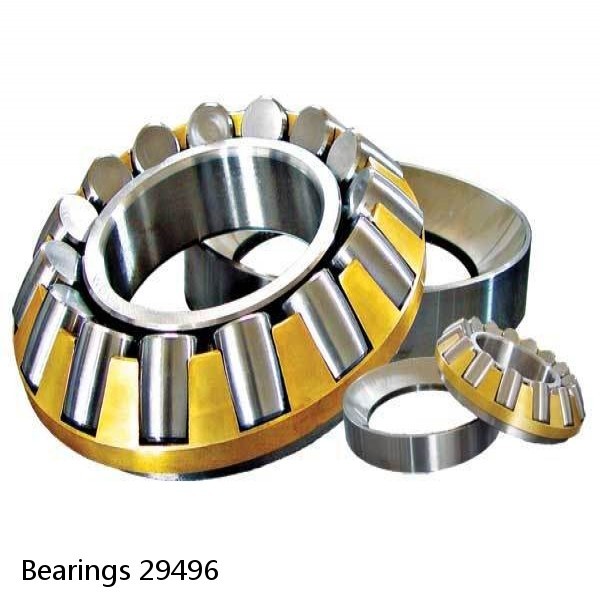 Bearings 29496
Bearings 29496 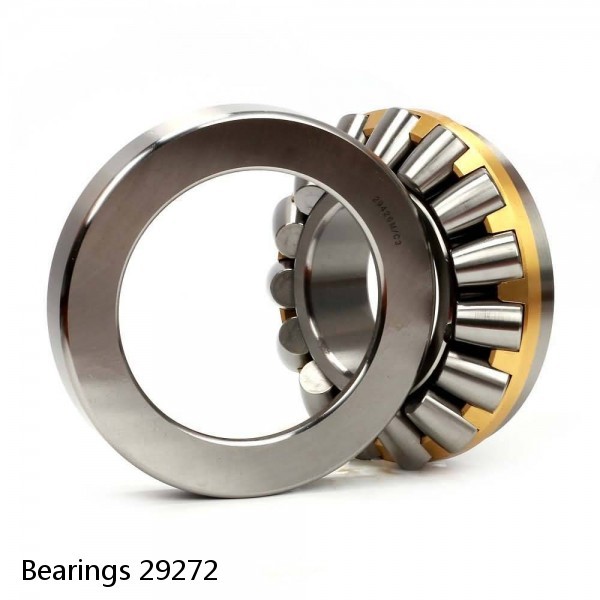 Bearings 29272
Bearings 29272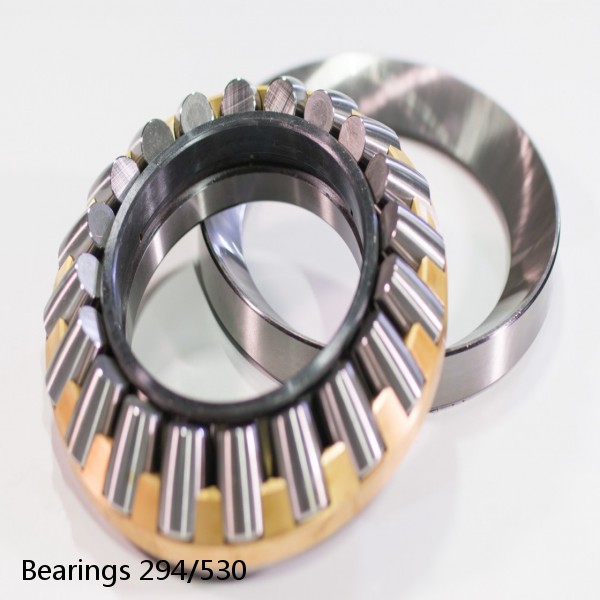 Bearings 294/530
Bearings 294/530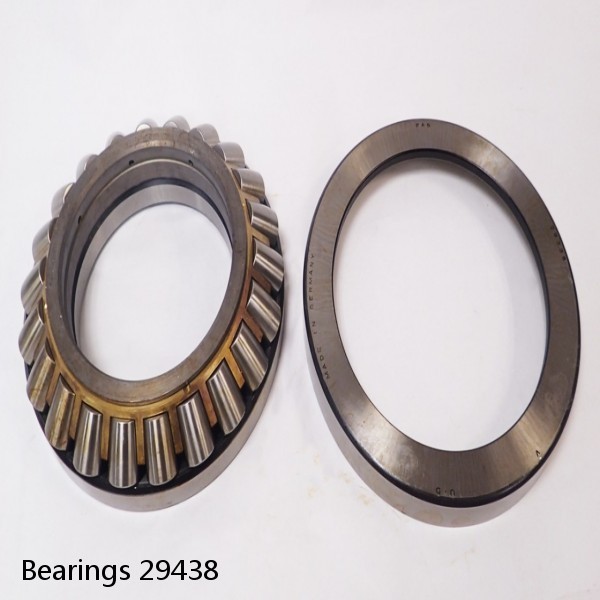 Bearings 29438
Bearings 29438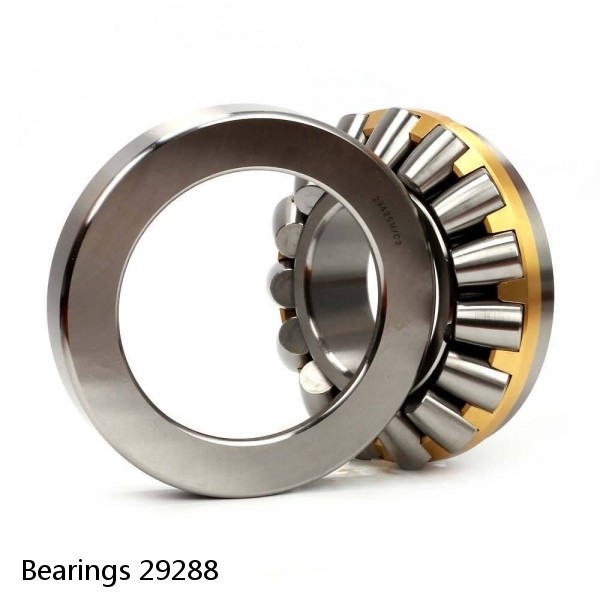 Bearings 29288
Bearings 29288